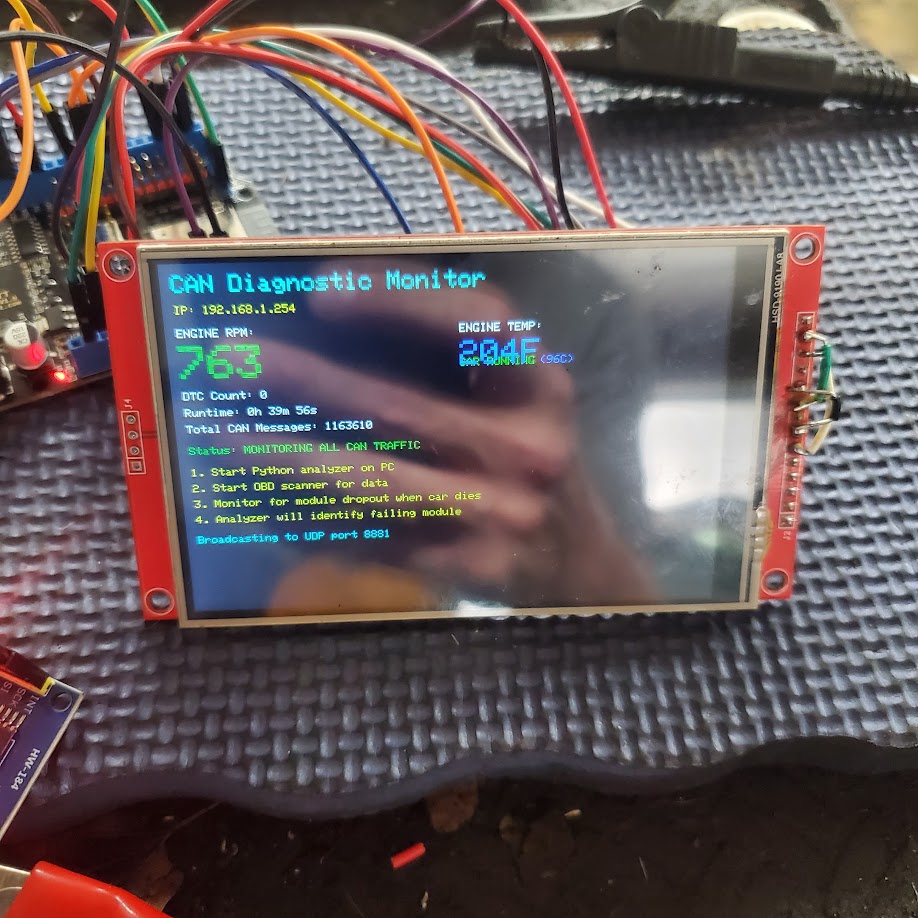Aftermarket Parts Nightmare: How I Built a CAN Bus Diagnostic Tool to Solve an Unsolvable Problem
When a friend brought me their 2016 Honda Civic with random stalling issues, I knew I’d need more than standard diagnostic equipment. After multiple dealership visits failed to solve the problem, I built a custom CAN Bus Diagnostic Tool called the HexRipper to capture real-time network data and identify the root cause.
The Mystery: A 2016 Honda Civic That Wouldn’t Stay Running
The Expensive Dead Ends
This wasn’t the owner’s first attempt at fixing the problem. The car had already been to multiple Honda dealerships, and they’d been charged hundreds of dollars for parts and diagnostics that didn’t fix anything. The frustrating part? No diagnostic codes, no other symptoms—just sudden, complete electrical failure.
Hoping for an easy fix, I removed the aftermarket LED headlights first, thinking they might be causing electrical interference. No such luck.
When Things Got Serious
Eventually, the car started throwing CAN bus codes in the instrument panel, transmission module, and brake module—but still no engine codes. I dove into the CAN bus network, checking all the wiring around the modules, inspecting pins, and cleaning connectors. Everything looked perfect, but the problem persisted.
The one advantage I had was repeatability: once the car warmed up to 205, it would die every few minutes like clockwork.
Building a Custom CAN Bus Diagnostic Tool: The HexRipper
That’s when I got serious. I had most of the electronics I needed laying around from previous projects—the only missing piece was a CAN bus chip. So I built a custom device to capture CAN bus traffic in real-time. It would transmit over udp packets to my PC for analysis. My goal was to identify which module was dropping out first, or catch any corrupt packets that might point to the root cause.
The results were immediately revealing: I could see the CAN bus dropping out for less than a second before the car died. Consistently, the instrument panel was the first module to go offline.
Advanced Can Bus Investigation
I focused all my attention on the instrument panel. I checked the wiring thoroughly, performed tap tests while the car was hot (trying to induce the failure), and examined every connection. Nothing.
AI Analysis of CAN Bus Diagnostic Tool Data
As a last-ditch effort, I captured five complete “death events” with my diagnostic tool and uploaded all the data from every module to Claude AI. I asked it to identify patterns in the data that correlated with the car stalling.
The Surprising Diagnosis: EMI from a Faulty Coil Pack
Claude’s analysis revealed something unexpected: every single time, microseconds before total failure, the ignition system was showing signs of degradation. This led me to check the ignition coils.
When I tested all four coils with an ohm meter, one coil read significantly different from the other three. I replaced that single coil, and the problem was completely solved. (I later replaced all four coils as a precaution.)
The Plot Twist: Brand New, Defective Parts
Here’s the kicker that explains why the dealerships never found the problem: all the coils were brand new. The car owner had replaced them before any of this started, so they looked perfect and “worked” in the sense that there were no misfires—the engine ran smoothly. However, one coil was generating enough electromagnetic interference (EMI) to disrupt the CAN bus network when the engine got to exactly 205-208 degrees.
The Lesson: OEM Parts Matter More Than Ever
Modern cars are incredibly sensitive to electronic interference. Engine sensors, ignition components, and other critical systems need to meet strict electromagnetic compatibility standards. When it comes to these components, stick with OEM or proven aftermarket brands from reputable manufacturers.
Saving a few dollars on generic parts can cost you hundreds in diagnostic time and leave you stranded on the side of the road. In this case, a single defective coil pack created an intermittent EMI issue that was nearly impossible to diagnose using traditional methods.
About the HexRipper Can Bus Diagnostic Tool
The custom CAN bus diagnostic tool I built for this project proved invaluable for capturing real-time network data during failure events. Sometimes the most challenging problems require custom solutions and thinking outside the box—or in this case, outside the standard diagnostic procedures.
Future Development
The success of the HexRipper in solving this “impossible” problem has inspired me to continue developing it further. I plan to refine the tool and make it available to other mechanics and automotive enthusiasts in the future. The goal is to create an accessible diagnostic solution that can help identify CAN bus problems that traditional scan tools might miss.
If you’re interested in following the development of the HexRipper, want to contribute, or have similar diagnostic challenges, feel free to reach out.
